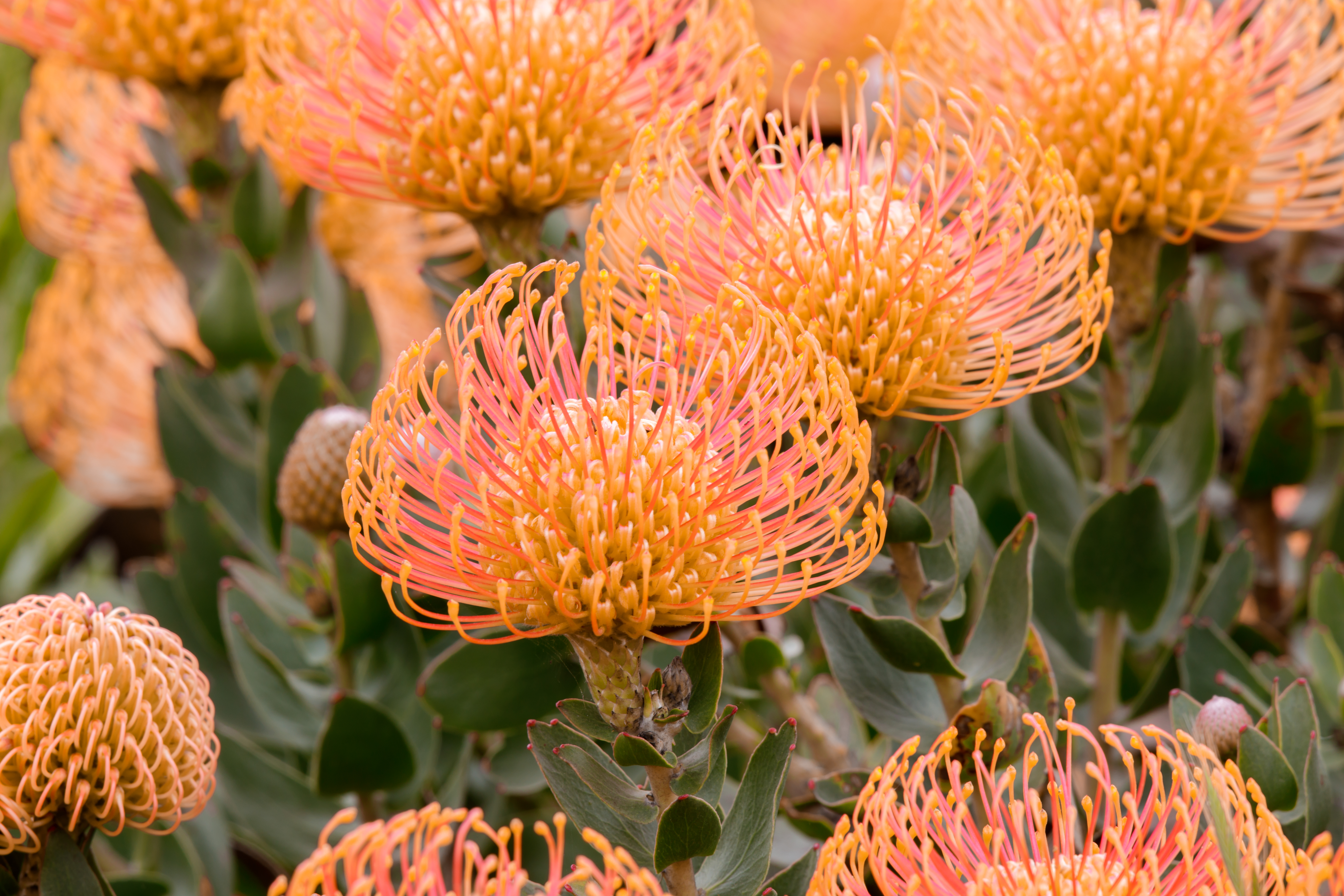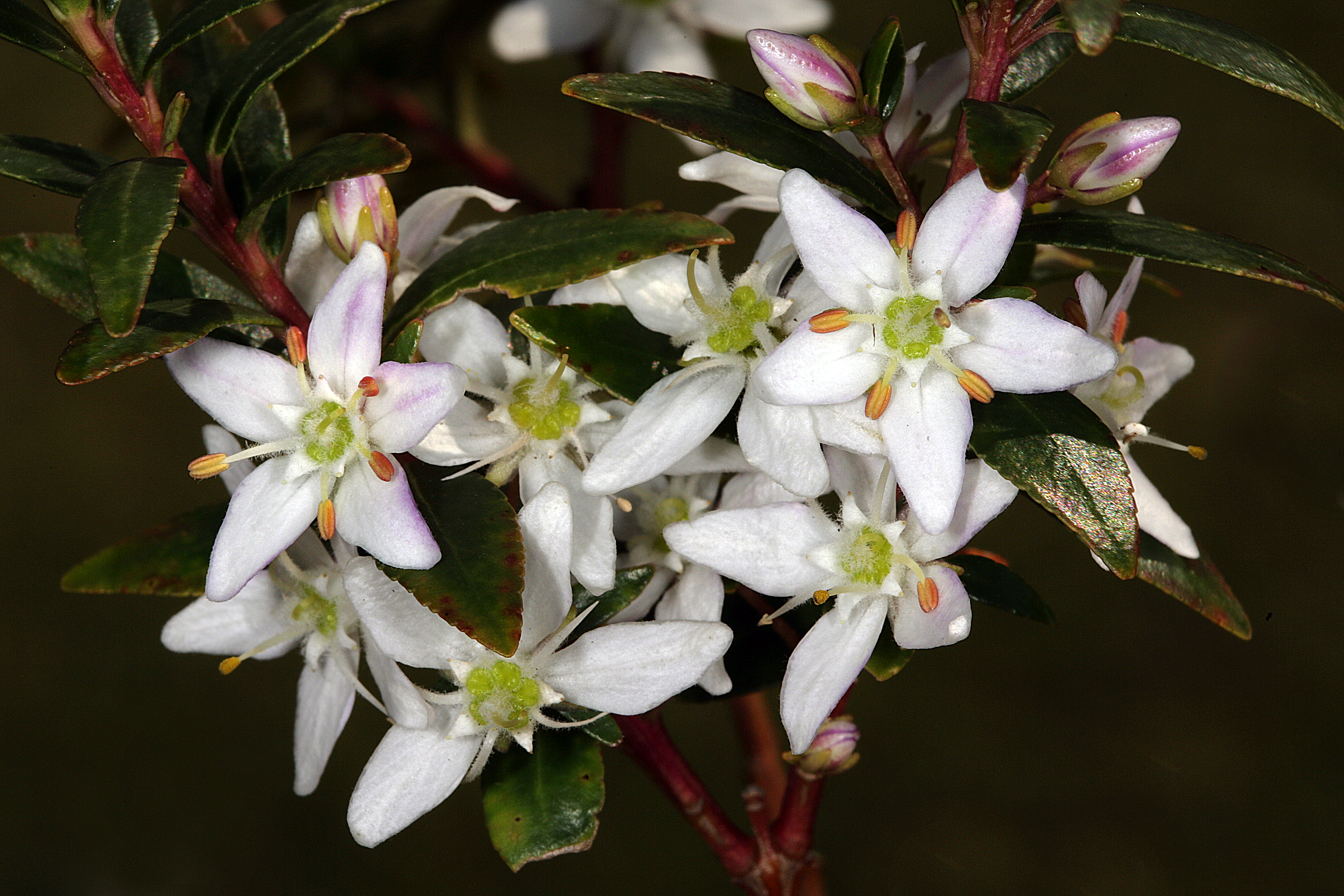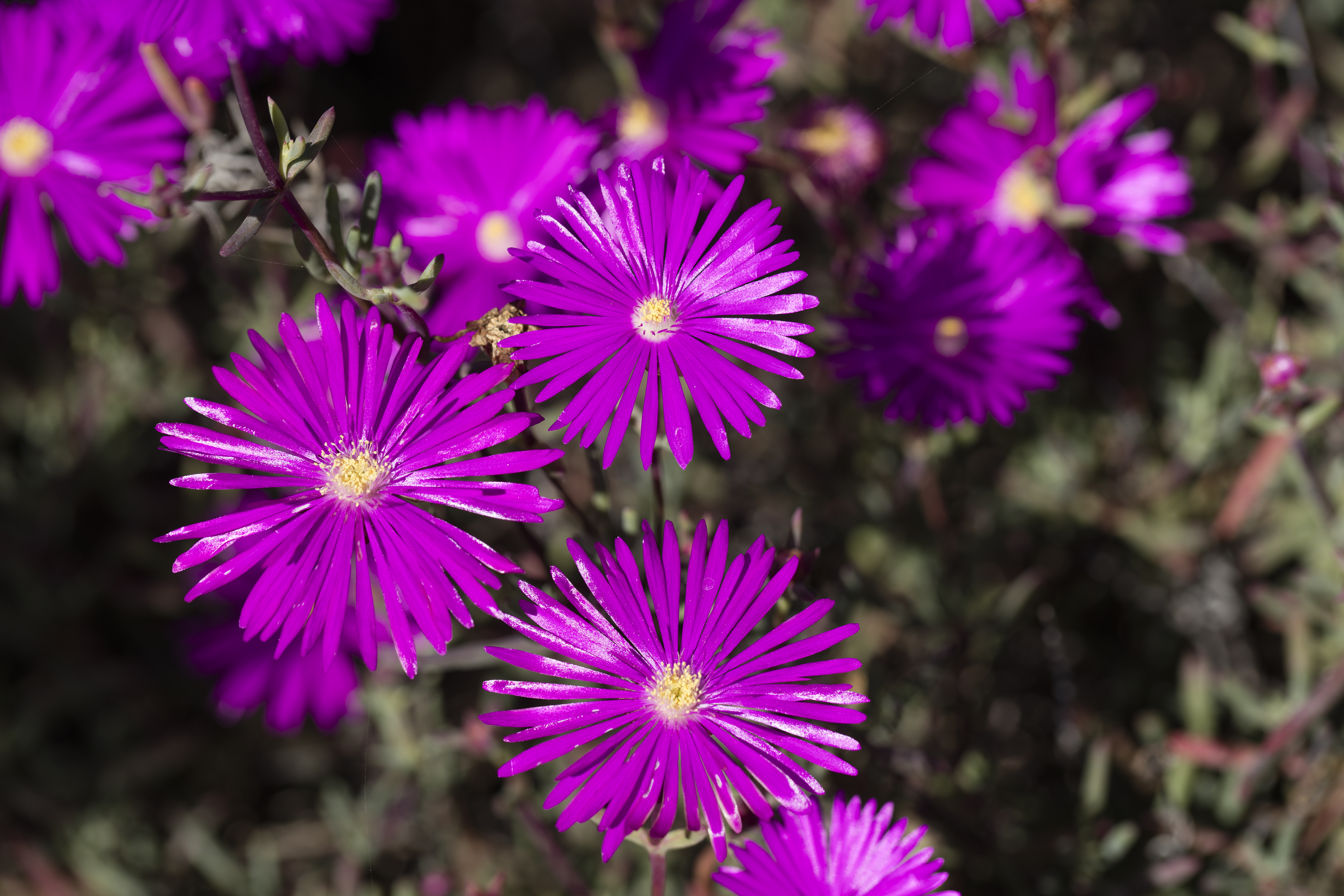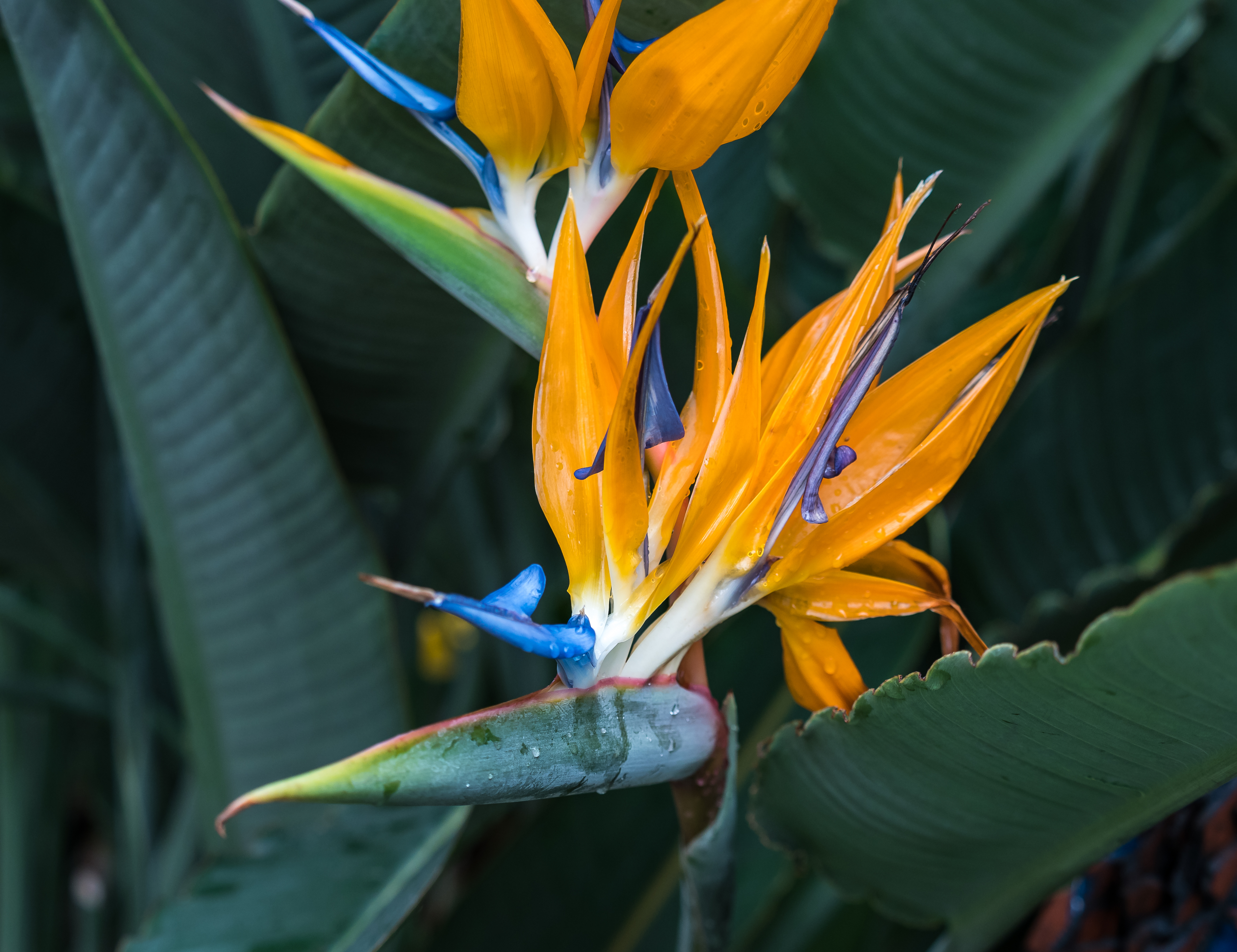
Plant indigenous plants in your garden
Planting indigenous plants in your garden support our local flora and limit the number of invasive species entering our natural spaces. An indigenous garden will help to create a healthy ecosystem and support biodiversity.
Non-indigenous flowers and trees may look good in our gardens, but they often require a lot of work and use a lot more water. They also provide little or no food for honeybees, indigenous pollinators, songbirds, and other endemic wildlife, which sadly leads to the reduction of our bird and bee populations. Often non-indigenous plants grow faster than indigenous species, displacing them and suppressing the endemic flora.
Planting indigenous plants at home and work have many benefits including:
- They’re drought resistant
Indigenous plants have adapted to our dry climate and can survive in poor soil conditions during the drought season. Non-indigenous plants use a lot of water, so by planting indigenous you also save water during times of drought. - They attract indigenous birds
Many indigenous plants attract birds and wildlife with their blooms, scent, fruit and insect life. By planning your indigenous garden carefully, you'll create a safe and natural environment for abundant life. - You can preserve our natural habitat and heritage
The Western Cape is home to some of the most unique flower species in the world. By planting indigenous, you play a role in preserving our indigenous flora. - They attract indigenous pollinators like bees and songbirds
Indigenous trees and fynbos attract pollinators and birds that will spread pollen and seeds and in turn create a self-sustaining ecosystem.
Indigenous plants you can plant in your garden
Pincushion Protea
Indigenous to the southwestern region of the Cape, the pincushion protea is one of the most popular proteas for gardeners. They grow about 1.5m tall and require little maintenance.
Red hot poker
Red-hot pokers are excellent garden plants. Their bright colours will add character to your garden and will attract a lot of birds.
Vygies
Vygies is one of South Africa’s most colourful plants. They’re easy to grow and can endure various soil types. Their wide colour range will add variety and beauty to your garden.
Buchu
Buchu is a medium to large shrub and best used as a filler plant in mixed fynbos, coastal and water-wise gardens. Planting buchu can also add a practical purpose to your garden, as it's also known to have medicinal qualities.
Strelitzia reginae
The strelitzia reginae is one of South Africa’s well-known plants, it’s even captured on the 50 cent coin. It's a robust plant that requires little maintenance and little water. They resemble the head of the crane bird, which earned it the colloquial name, bird of paradise.
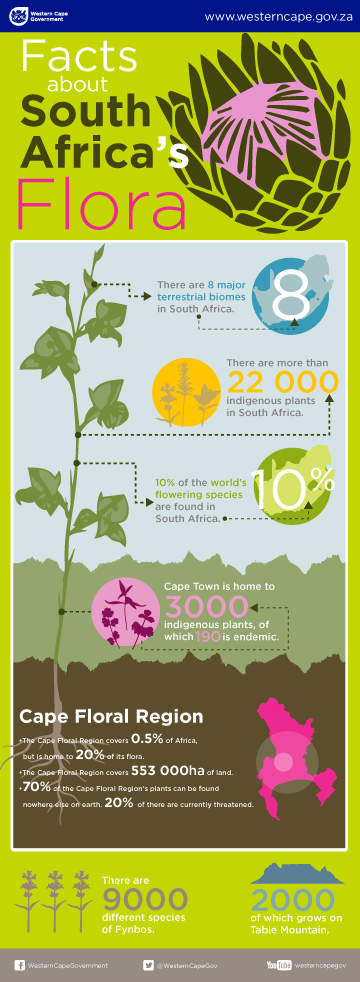
Flora in the Western Cape
The Western Cape is home to the smallest of the world's six floral kingdoms, the Cape Floral Kingdom, which is home to some of the most diverse flora in the world.
Almost 70% of its plant species can be found nowhere else on earth. There are over 9000 different types of fynbos, 2000 grows on Table Mountain.
Unfortunately, almost three-quarters of all the species in South Africa's IUCN Red Data book of threatened or endangered species are currently growing in this Floral Kingdom, and this means that hundreds of species are facing extinction.
While best known plants in the Cape Floral Kingdom are the fynbos and proteas, it's not the only plant community of the region. Other communities include the Renosterveld and Strandveld vegetations. Strandveld, or beach vegetation, is composed primarily of a shrubby flora found on sandy, well-drained and lime-rich soils, and Renosterveld is characterized by the Daisy Family.
Endangered flora in the Western Cape
The Western Cape is one of the most naturally diverse regions in the world. The Cape Floral Kingdom is a UNESCO world heritage site and a protected area. 70% of the 9600 flora species that exist in this area can be found nowhere else on earth.
Unfortunately, many of our indigenous plants are under threat due to habitat loss, land degradation, too frequent fires, unsustainable farming practices, the introduction of non-indigenous plants and diseases that are made worse by climate change.
Here are a few of the many indigenous plants that are currently under threat.
Paarl Fire Pea
Is a fairly large, pea-shaped, yellow changing to reddish flower that blossoms from spring to early summer. It's endemic to the Paarl Mountain area and is currently critically endangered. The Paarl fire pea is considered to be a fire ephemeral. This means that the species is usually found in high densities the first year after a fire.
Fragrant Blue Babiana
The fragrant blue babiana is a beautiful blue/purple flower that grows 70mm to 200mm tall and has an aromatic cinnamon scent. It was once a common flower in the low lying areas of Stellenbosch, Paarl and Cape Town, but due to habitat loss, its current status is now near-threatened.
Marasmodes
Marasmodes are a Renosterveld vegetation type flower that is endemic to the lowlands of the south-western parts of the Western Cape. Marasmodes are critically endangered.
Piketberg conebush
Is a type of protea that can only be found on the Piketberg mountain ranges. The conebush is listed as vulnerable, and its population is declining due to male plants being harvested for cut flowers which leaves a skewed population ratio of male to females, as well as habitat loss.
Clanwilliam cedar
Clanwilliam cedars are critically endangered and extremely rare trees. They're endemic to the Cedarberg mountain area. They're on the brink of extinction because of unsustainable harvesting.
Find out which other plants are endangered on the South African National Biodiversity Institute (SANBI) Red Data list.

